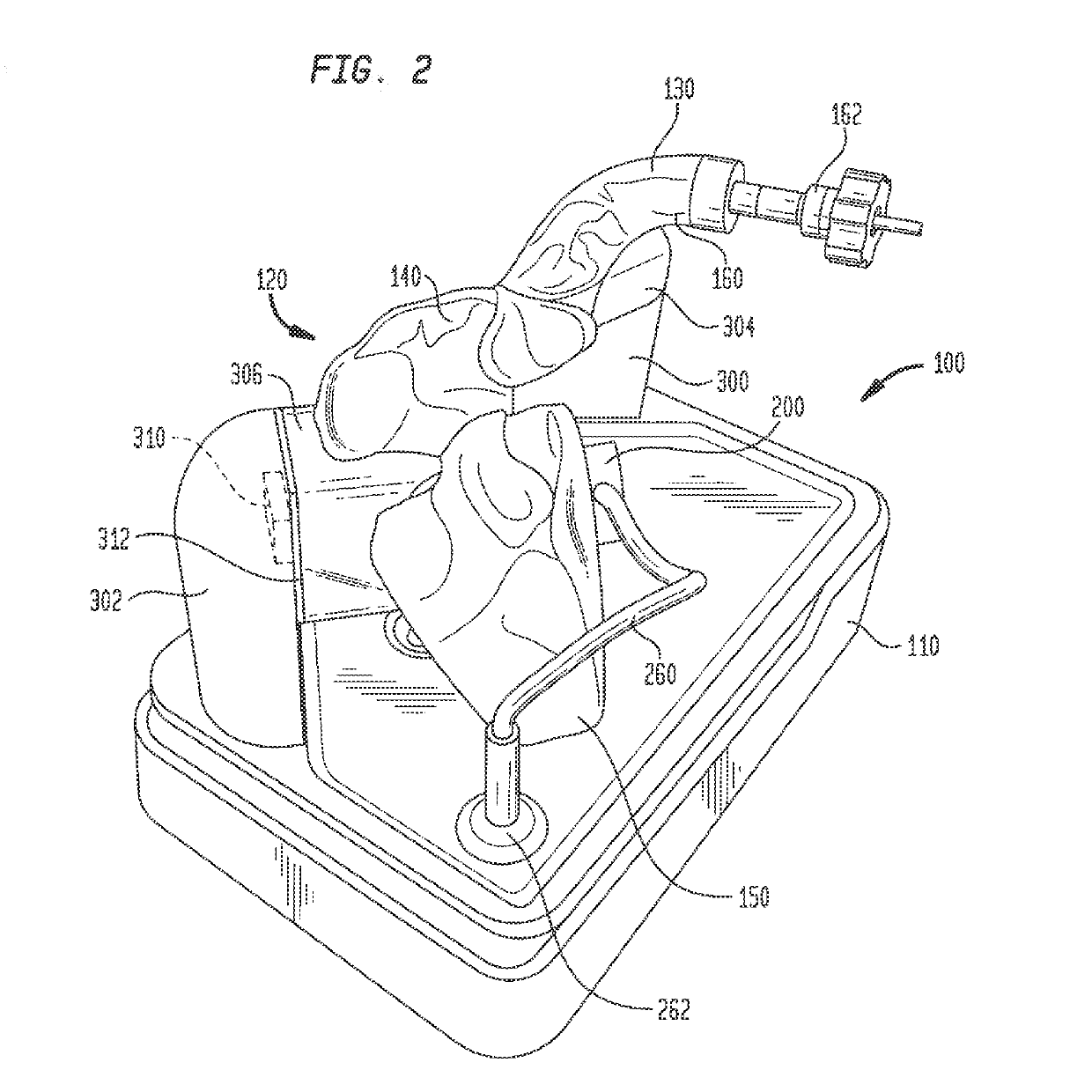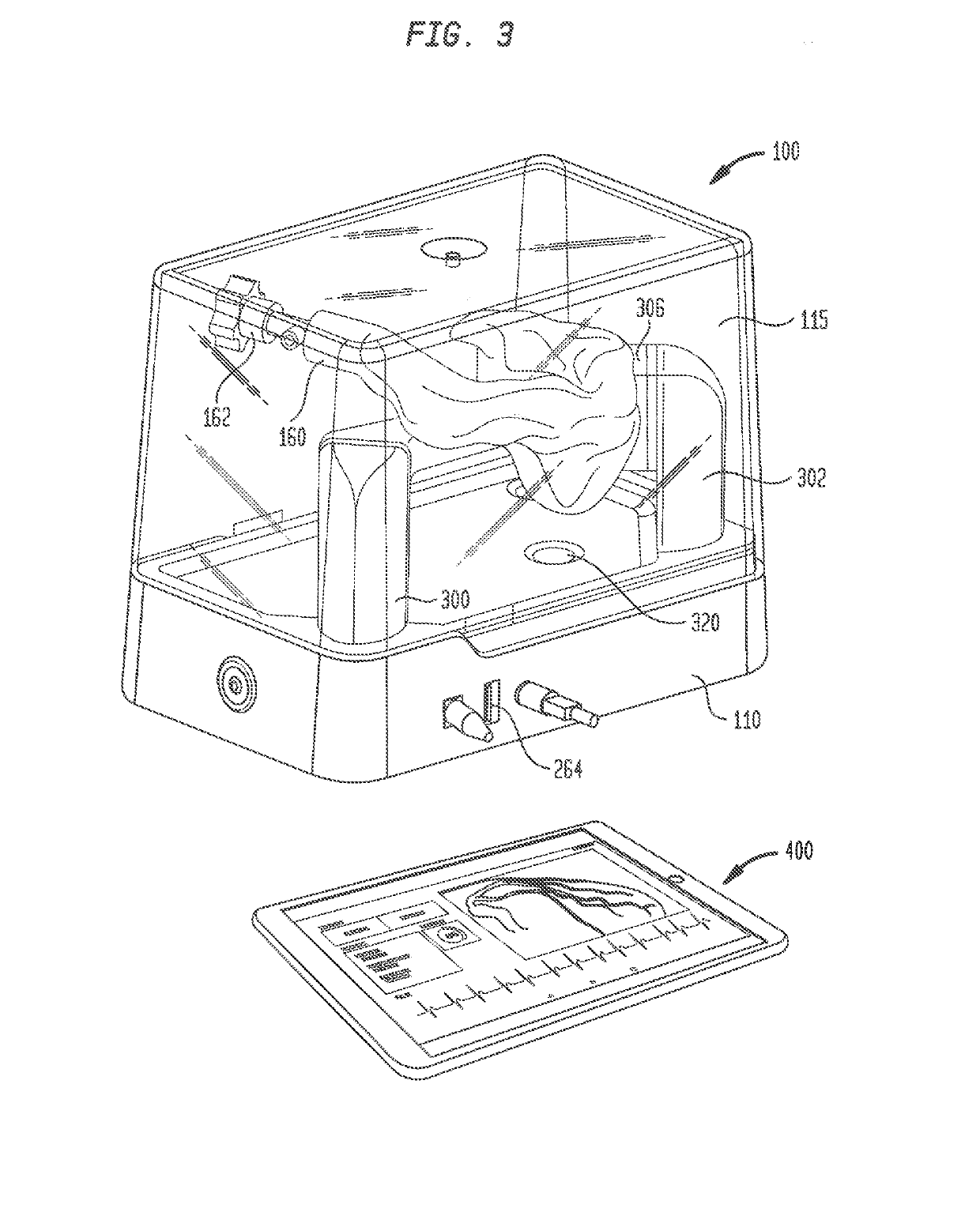Realistic electro-anatomical model of the mammalian his/purkinje system
an electro-anatomical model and mammalian technology, applied in educational models, medical science, surgery, etc., can solve the problems of increased risk of heart failure, increased risk of atrial fibrillation and overall mortality, and difficulty in achieving his pacing
- Summary
- Abstract
- Description
- Claims
- Application Information
AI Technical Summary
Benefits of technology
Problems solved by technology
Method used
Image
Examples
Embodiment Construction
[0026]An electro-anatomical model 100 according to the present disclosure is shown in FIGS. 1-3. Model 100 includes three main components, namely, an anatomically accurate shell 120, an electrically active plug insert 200, and a circuit for producing a simulated cardiac signal, such as the His signal.
[0027]Shell 120 is mounted on a base 110 that houses a circuit board for generating desired electrical signals, as well as other electronics for operating model 100. A removable cover 115 may mate with base 110 to cover shell 120 and protect same during shipment of model 100 and periods of nonuse. Shell 120 need only be as accurate as is needed for training or testing purposes. Thus, it need not look like, be oriented like, or be sized like the native anatomy so long as it is sufficiently anatomically accurate to permit its effective use. In one specific embodiment, as illustrated herein, shell 120 generally reproduces the anatomy of the right side of the human heart. Thus, referring to...
PUM
 Login to View More
Login to View More Abstract
Description
Claims
Application Information
 Login to View More
Login to View More - R&D
- Intellectual Property
- Life Sciences
- Materials
- Tech Scout
- Unparalleled Data Quality
- Higher Quality Content
- 60% Fewer Hallucinations
Browse by: Latest US Patents, China's latest patents, Technical Efficacy Thesaurus, Application Domain, Technology Topic, Popular Technical Reports.
© 2025 PatSnap. All rights reserved.Legal|Privacy policy|Modern Slavery Act Transparency Statement|Sitemap|About US| Contact US: help@patsnap.com



